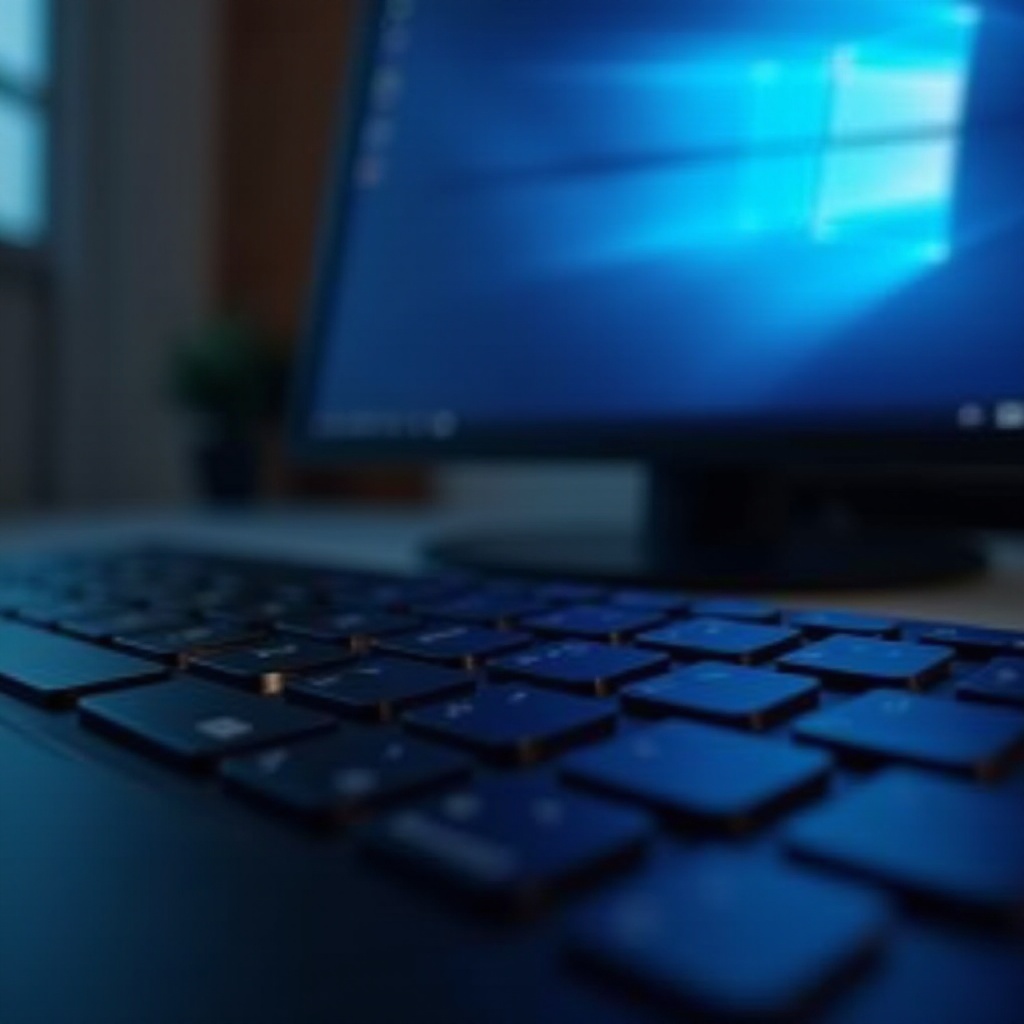Introduction
Keyboard challenges can arise unexpectedly, disrupting your workflow. Whether it’s keys not responding or layout changes, these issues can be daunting. This guide provides easy steps to reset your keyboard on Windows 10, aiding you in restoring functionality without hassle.

Understanding Keyboard Issues in Windows 10
Recognizing the root of keyboard problems is essential prior to taking corrective steps. Issues may stem from software errors, outdated drivers, or hardware malfunctions. Identifying whether your keyboard is exhibiting erratic behavior, or certain keys aren’t working, is crucial. This sets the stage for selecting the appropriate reset method tailored to your situation.

Basic Methods to Reset Keyboard on Windows 10
Starting with straightforward solutions can often produce quick results. Here’s how you can reset your keyboard settings with ease:
- Method 1: Reset Using Windows Settings
- Open the Start menu and click on ‘Settings’.
- Navigate to ‘Time & Language’, and then select ‘Language’.
- Verify your desired language and keyboard layout under ‘Preferred languages’.
-
Access ‘Keyboard’ options to restore defaults, if necessary.
-
Method 2: Reset via Control Panel
- Access ‘Control Panel’ from the Start menu.
- Choose ‘Ease of Access Center’.
- Select ‘Make the keyboard easier to use’.
- Uncheck options that alter default keyboard functions, such as Sticky Keys or Filter Keys.
These primary resets can resolve minor software-related issues with the keyboard, allowing you to swiftly move forward.
Advanced Techniques for Resetting Your Keyboard
Should basic solutions not suffice, advanced techniques are available for deeper issues:
- Using Device Manager for Keyboard Reset
- Right-click the ‘Start’ button and select ‘Device Manager’.
- Expand ‘Keyboards’, right-click on your device, and choose ‘Uninstall device’.
-
Restart your computer to automatically reinstall the default driver.
-
Employing Command Prompt for Keyboard Solutions
- Run ‘Command Prompt’ as an administrator by searching ‘cmd’ in the Start menu, right-clicking it, and selecting ‘Run as administrator’.
- Type ‘sfc /scannow’ and press Enter. This command checks and repairs corrupted system files affecting keyboard settings.
These advanced approaches help address secondary issues, ensuring your keyboard’s settings are accurately restored.

Troubleshooting Common Keyboard Problems
If resetting doesn’t fully resolve the issues, further troubleshooting may be required:
- Updating Keyboard Drivers in Windows 10
- Open ‘Device Manager’.
- Locate your keyboard under ‘Keyboards’, right-click, and select ‘Update driver’.
-
Choose ‘Search automatically for updated driver software’.
-
Checking for Hardware Issues
- Ensure all connections are secure, especially for wired keyboards.
- Test with alternate USB ports or check batteries for wireless models.
These checks ensure no physical connection problems are present, which is a common cause of persistent issues.
Preventive Measures to Avoid Future Keyboard Issues
Implement preventive strategies to reduce the occurrence of future keyboard problems. Here’s what you can do:
-
Regular Maintenance and Cleaning
To keep your keyboard in optimal condition, regularly remove dust and debris using compressed air.
-
Keeping Windows 10 Updated
Ensure your system receives the latest updates that contain bug fixes for enhanced stability.
Adopting these measures helps in maintaining your keyboard’s performance over time, ensuring fewer interruptions.
Conclusion
Resetting your keyboard on Windows 10 doesn’t need to be a daunting task. Armed with these methods, you can quickly resolve issues affecting your keyboard’s performance. If challenges persist beyond these solutions, consulting with a professional is wise.
Frequently Asked Questions
How do I reset my keyboard if these methods don’t work?
If the methods above fail, consider performing a system restore to revert your computer to a state when the keyboard functioned correctly.
How often should I update my keyboard drivers?
You should check and update your drivers regularly, at least once a month or following major Windows updates or experiencing performance issues.
Can keyboard issues affect other parts of my computer?
Keyboard issues can signal broader system concerns, such as driver conflicts or malware, and should be addressed as part of overall system maintenance.
